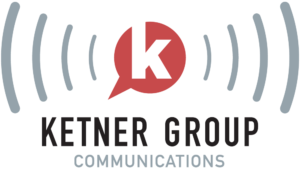As part of our new webinar series, KG Connects, we recently invited Jeffrey Henning and Tony Cheevers of Researchscape to give attendees an overview of the types of PR surveys and custom research they have been working on during the COVID-19 crisis, as well as their best practices for conducting newsworthy surveys.
As PR practitioners, we know that some of the best media coverage is powered by data that can tell a unique story. In other words, it’s a PR goldmine if you can find those one-of-a-kind nuggets of data that will generate the publicity you are looking for.
According to the Researchscape team – and PR people all over the world – stories that can place a company in the larger context of sweeping changes, backed by recent data, will resonate best with journalists.
There is never a bad time to field a PR survey. In fact, Researchscape has conducted 21,000 surveys since March 1. Three out of four research surveys today have a COVID-19 angle.
But, how can you ensure that you are putting the right information from a survey into your press release or proactive pitch? Better yet, what are the best practices for setting up your survey for long-term success?
According to Researchscape, focusing on the following five processes will set you on the right track:
Set Goals
As with any PR and communications campaign, setting a goal focuses your efforts and saves time and budget that might have gone to extraneous details.
Companies should develop long term goals such as building brand awareness, generating leads or developing content for a content marketing strategy. Executing a PR survey should also have short term goals such as providing support for a product launch or leveraging a holiday or trending story/event for coverage.
Remember this critical first step or risk losing the overall vision of your campaign.
Design and Field the Survey
Now that you have your goals set, the next step is to brainstorm possible headlines that you would love to see – kind of an “in a perfect world” exercise with your team! Researchscape suggests you “let your team’s imagination go wild, envisioning the results that would best drive coverage.”
Once you come up with your dream headlines, now is the time to come up with the questions. This is where academic discipline and a little bit of art in surveys comes to play. According to Researchscape, the main problems that lead to inaccurate survey results and will reduce credibility with reporters are asking leading questions or encouraging acquiescence bias.
A good rule of thumb: a well-designed questionnaire can provide material for two or three news releases. As outlined in a Researchscape whitepaper, the average survey news release typically reports the findings from five questions (not including demographic questions).
A 15- to 20-question survey can easily provide content for three or four news releases.
Develop Campaign Assets
Most survey news releases simply include a summary of key findings of the survey, without commentary or context. But, with additional effort and detail, you can get far better results.
How to get survey results covered by media:
Include:
- Exhibits: These include high-quality charts and graphs that can be used by reporters. Don’t forget to put your company’s name in the graphic!
- Topline Results: These should accompany the press release and include the full list of complete questions and the answers selected for each question. As one reporter says, “I want to see what the questions are and what order they are asked in.”
- Methodology FAQ: Don’t push the methodology summary to the last paragraph of the release. Create a methodology document or section in the release that answers the questions that journalists are trained to look for in surveys.
Write the News Release
Once you develop campaign assets, it’s time to write your killer press release(s) and make your push to key media.
Rule of thumb: Journalists prefer timely content. Announce your findings as soon as you can.
When writing your survey press releases, pay attention to these common mistakes as reported by Researchscape:
- Overgeneralizing
- Being overly precise
- Claiming a margin of sampling error
- Reporting on questions with too few respondents
- Failing to disclose the basics
- Not linking to resources
- MISSING THE POINT!
Adapt and Re-Use
You’ve drafted a strong press release, pitched it to your key media targets and have secured press all while building brand awareness and generating leads – now what?
Do it all again next year, of course!
At Ketner Group, we have had clients conduct the same survey for consecutive years with great success. It allows us to do year-over-year comparisons so we can give reporters “trend reports” that provide more than just a snapshot in time. This is one of the best ways to become a go-to expert and thought leader on a given topic.
For more information about the process of creating newsworthy PR surveys, I encourage you to read the Best Practices for Newsmaker Surveys whitepaper from Researchscape that analyzes more than 3,000 surveys done over seven years.
Put Your Ideas in Motion
If you need help designing or getting the most out of your next PR survey project, connect with me at [email protected] to set up a free 30-minute consultation.




